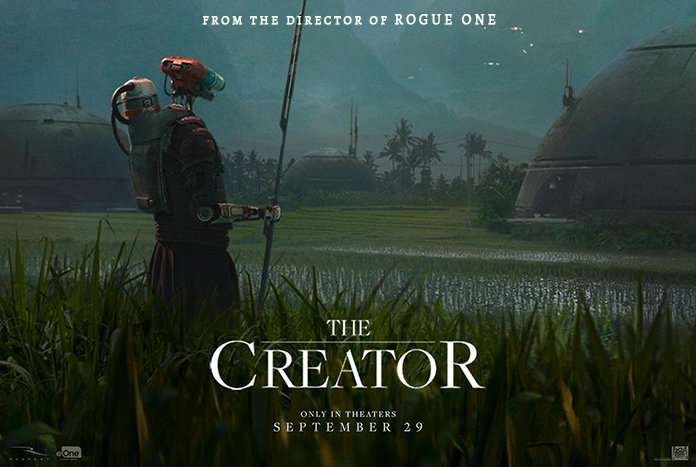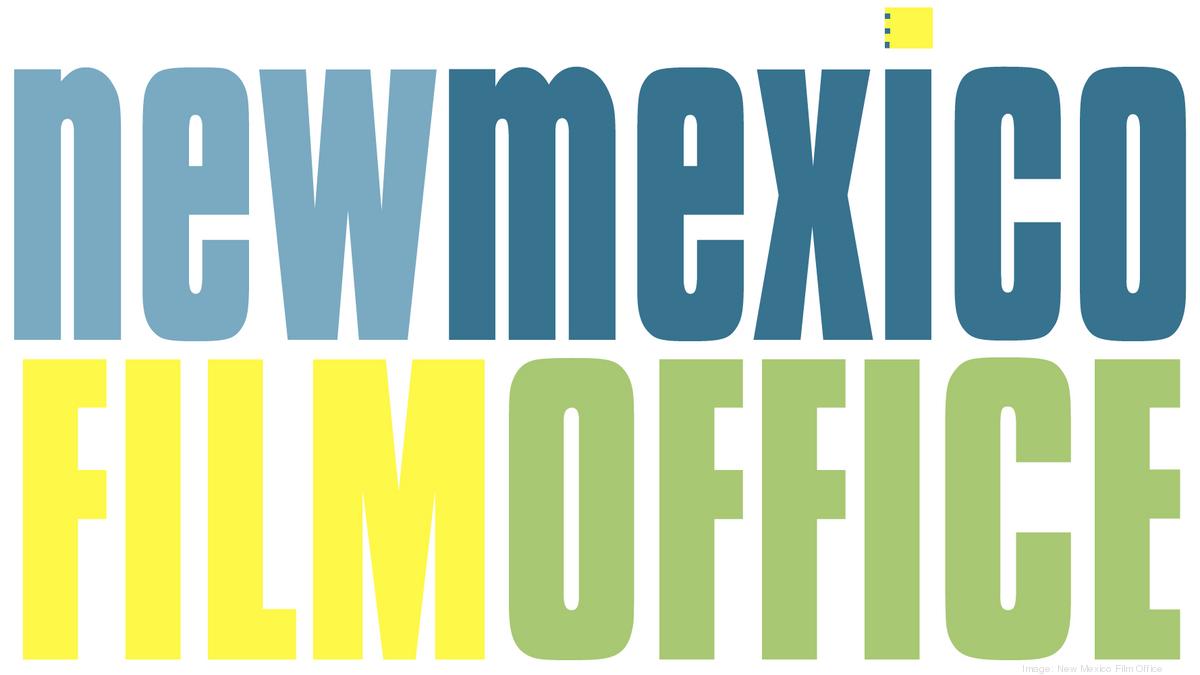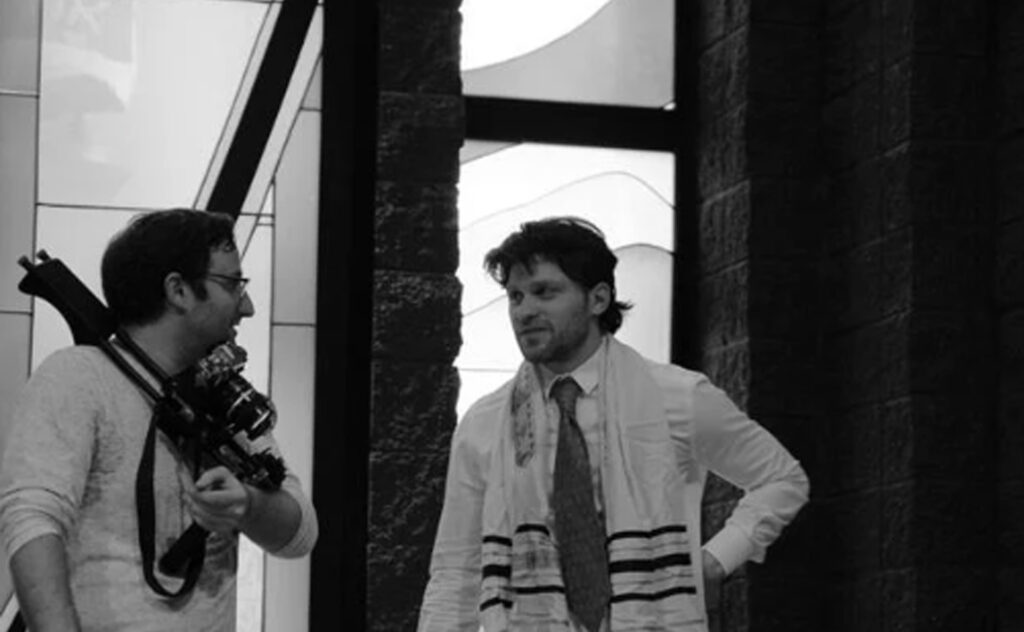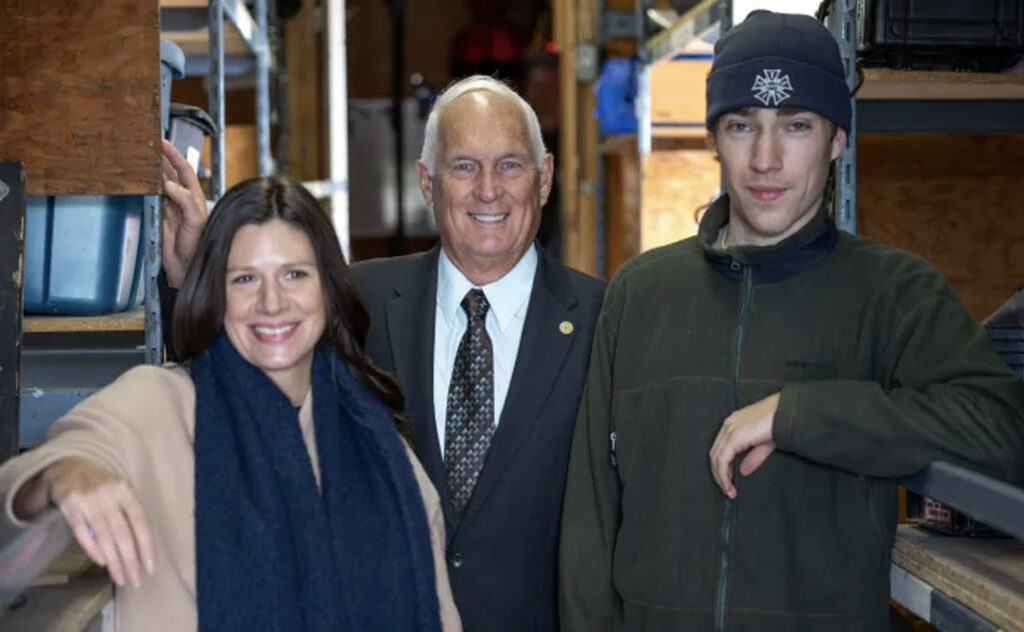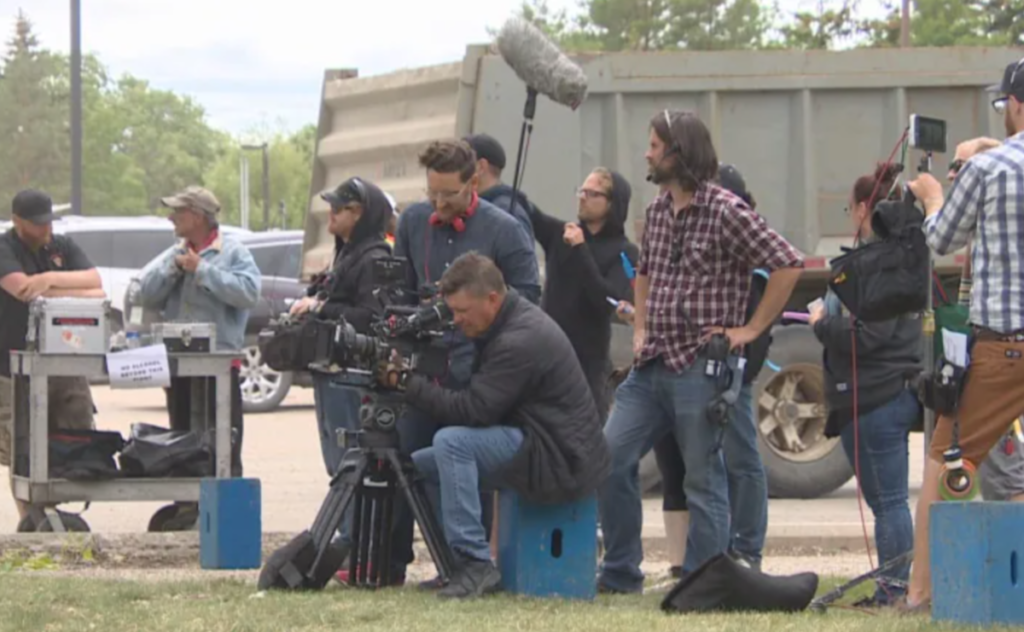CALIFORNIA’S FILM INCENTIVES PROGRAM SEES GROWTH IN JOBS & PRODUCTION SPENDING
California’s Film Incentives Program Sees Growth In Jobs & Production Spending, But “Lack Of Available Funds” Still Leads Many Projects To Flee The State
(deadline.com)
Runaway film and TV productions that applied for California tax credits from 2020 to 2022 but were “ultimately denied due to lack of available funds” ended up spending nearly $1 billion in production costs outside the state. That’s according to the latest report from the California Film Commission, which makes a compelling case for greater funding of the state’s tax incentives program.
California currently offers $420 million a year in film incentives, but it’s not nearly enough to support all of the films and TV shows that want to shoot here. New York, with a much smaller film industry, also offers $420 million in credits, and Georgia handed out $1.2 billion last year.
Even so, production spending and employment continues to grow in the state among incentivized projects. According to the report, direct in-state spending by projects that received the tax credits grew by $200 million – from $2.1 billion to $2.3 billion – during the 2021-22 fiscal year, with growth continuing through the first half of this year. Estimated total spending for the first two-and-a-half years of the current program – Program 3.0 – is expected to top $6.2 billion.
“California’s iconic film industry continues to create opportunity and drive economic growth throughout our state,” said Governor Gavin Newsom. “Today’s report from the California Film Commission affirms the tax credit program continues to produce outstanding results and foster diversity and inclusion for a workforce that better reflects our vibrant communities.”
“The competition today is global, so it’s wonderful to see our state’s commitment to maintaining our status as the world’s film and TV production capital,” said California Film Commission Executive Director Colleen Bell. “The tax credit program is an incredibly effective tool, and today’s report confirms it’s working precisely as intended.”
The report says that every dollar that the state spends on film incentives generates many multiples of dollars in terms of wages and gross domestic product. Based on data collected by the Los Angeles Economic Development Corporation, the report confirms that “for every tax credit dollar allocated, the state benefitted from at least $24.40 in economic output, $16.14 in gross domestic product, $8.60 in wages and $1.07 in state and local tax revenues.”
In all, the previous version of the program – Program 2.0 – generated a total of $21.9 billion in economic output and $961.5 million in state and local tax revenue over its five-year run.
But those numbers could have been much higher if there was enough money in the program to fund even more projects and keep them filming in California. According to the report, the state lost 77% of production spending by those projects that applied for but did not receive a California tax credit over the past year, and that 16 out of 28 projects that did not receive a tax credit left California to be produced out-of-state. “These runaway projects accounted for $951 million in production spending outside California,” the report says.
“With the $951million lost globally,” the report says, “productions that did not receive tax credits left California to generate expenditures” in other jurisdictions, including:
• New York: $254 million
• Georgia: $130 million
• New Mexico: $28 million
• Louisiana: $2 million
• Other U.S. jurisdictions: $299 million
• Canada: $88 million
• England, Italy, Ireland, Mexico: $150 million
Five recent projects cited in the report that got turned down here for tax credits and then went somewhere to shoot include Don’t Look Up, which took its estimated $100 million production budget to film in Massachusetts and Washington, DC; Day Shift, which filmed in Georgia with an estimated $100 million production budget; Pinocchio, which filmed in England and Italy with an estimated $150 million production budget; season three of Succession, which filmed in New York with an estimated production budget of $81 million, and The Mighty Ducks, which shot in Vancouver with a budget of $20 million.
Even worse, California is losing out on billions of dollars in visual effects and virtual production spending because the state is the only major production center that lacks a stand-alone visual effects (VFX) credit.
“A recent study revealed that over $7 billion is projected in worldwide VFX spend in 2022, increasing to $10.5 billion by 2025,” the report says. “California is not benefiting from this expanding sector of the motion picture industry due to a lack of targeted incentives.”
“The majority of VFX work is performed outside of California, assigned to companies in countries and provinces with a 30-40% rebate on visual effects work without the requirement of filming the same project in that jurisdiction,” the report says. “VFX artists, technicians, programmers, coordinators, producers, supervisors, match-movers, compositors, effects artists, and hundreds of other types of VFX workers living outside of California are being paid for visual effects work from studios and companies based in California. California’s 25% tax credit is not competitive enough for some company’s financial goals; therefore, many California-approved tax credit projects decide to get VFX work done at other locales which provide a stand-alone VFX tax credit.”
“With the addition of virtual production, the filmmaking process’ complex visual effects work has increased,” the report notes. “Companies which perform this VFX technology are finding it difficult to continue to operate in California without the kinds of incentives available elsewhere. They have invested heavily in highly trained technicians and want to remain in the Golden State. However, seeking ways to lower costs means going elsewhere to chase incentives.
“As a result, many California VFX companies have created offshore subsidiaries and are training workforces to work on projects in jurisdictions with stand-alone incentive programs. According to a recent analysis by KMPG, the visual effects market is an estimated $6 to $7 billion industry and is projected to grow roughly12% through 2025. With the growth of streaming services – Netflix, Disney+, Hulu, Amazon Prime, Apple TV+, Warner Bros Discovery, CBS, Peacock – the demand for content and shows with heavy visual effects and virtual production is growing.”
Evaluating the “state’s loss” in the VFX arena, the report cites “compelling data” from KMPG, the giant accounting firm, that shows that “approximately $6 billion of VFX expenditures were performed outside of California in the last five years. To illustrate the dichotomy between worldwide VFX spend and California spend, one company reported that they spent $920 million on VFX labor worldwide, while spending only $38.8million in California.”
California also comes up short in the area of monetizing the global sale of tax credits. “As a key part of a production’s financing structure, companies rely on the ability to sell tax credits to third parties or back to the state,” the report notes. “Jurisdictions with such monetization and refund ability provisions hold a competitive edge. California is one of the few jurisdictions that do not offer this type of incentive.”
Other highlights of the report include:
In-State Employment
The 106 projects approved during the first two and a half years of Program 3.0 are estimated to generate $6.2 billion in direct in‐states pending, including more than $2.1 billion in qualified wages. The 106 approved projects selected for year-two of Program 3.0 are on track to employ a combined 8,135 crew, 4,111 cast and 79,248 background actors/stand-ins (the latter measured in “man-days”) during 2,421 filming days in California. Projects selected for the first half of fiscal year-three are on track to employ 4,497 crew, 1,141 cast and 50,458 background actors/stand ins during 1,297 filming days. In aggregate, the first two-and-a-half years of Program 3.0 are on track to employ a total of 18,736 crew, 9,833 cast and 204,700 background actors/stand-ins with 5,900 filming days. The report notes that productions in the tax credit program also generate non-incentivized post-production jobs and revenue for VFX artists, sound editors, sound mixers, musicians and other workers/vendors.
U.S. Workforce Statistics
The entertainment industry generated $192 billion in total film and television wages, with $84 billion of direct wages earned by workers supported by the motion picture industry throughout the United States. With $27billion in payments to over 359,000 local business, the motion picture and television industry generates millions of jobs across the United States.
Workforce Training, Diversity and Inclusion
Program 3.0 includes several new and ongoing initiatives to promote workforce training, diversity and inclusion. The Career Readiness requirement (continued from Program 2.0) mandates all tax credit projects participate in learning and training programs for students based in California. Working in collaboration with the California Department of Education and the California Community Colleges Chancellor’s office, tax credit projects have fulfilled the requirement by hiring students for paid internships, welcoming faculty members for externships, hosting workshops/panels and staging professional skills tours.
During the height of the pandemic, in-person experiences such as internships, externships, and professional skills tours were suspended. In total, 33 projects in Program 3.0 have completed the Career Readiness requirement, with $169,653 contributed in aggregate to either California Community Colleges or the California Department of Education.
New for Program 3.0 is the Career Pathways Program that targets individuals from underserved communities. It is funded directly by tax credit projects and works with partner training programs across the state.
Since 2020, training providers ManifestWorks, Hollywood CPR, and IATSE Local 695’s SVOP Y-16A Training Program have helped achieve Career Pathways Program goals. A total of 141 individuals have participated in the program: 30 with Hollywood CPR, 39 with ManifestWorks, and 17 with SVOP – all during year-two of Program 3.0.
Relocating TV Series
During its second fiscal year, Program 3.0 welcomed two relocating TV series from Vancouver and Georgia. The first half of the current (third) fiscal year brings two additional relocating series from New Orleans and Florida. To date, a total of 27 TV series have relocated to California under different iterations of the state’s tax credit program.
Big Budget Films
During its second fiscal year, Program 3.0 welcomed five films with budgets greater than $60 million that are on track to bring an estimated $738 million in direct in-state spending. Projects include Atlas, Beverly Hills Cop 4, and Unfrosted. The first half of the current fiscal year brings an additional four big-budget film projects including Joker: Folie a Deux and The Thomas Crown Affair. To date, Program 3.0 has welcomed 11 big-budget films – or half of the 22 feature films accepted into the program thus far.
Sound Stages
California Senate Bill 144 was passed on July 21, 2021, creating the California Soundstage Filming Tax Credit Program to incentivize construction and renovation of California soundstages as well as repurposing of other space into sound stages. The Soundstage Filming Program allocates $150 million in tax credits on a first come, first served basis over up to a ten-year period from 2022-2032.
The report, however, notes that the Soundstage Filming Program “is still in the early stages of implementation,” and that many other jurisdictions are rushing to fill the need. To date, Soundstage Certification Letters have been issued to a total of 13 soundstages statewide – eight newly constructed and five renovated – with a combined size of over 200,000 sq. ft.
“With Los Angeles soundstages operating at over 90% capacity after the 2020 Covid shutdowns,” the report notes, “the necessity for productions to film in other locations has increased the need for more soundstage infrastructure worldwide. Though Los Angeles leads the world in dedicated sound stage space with 5.4 million square feet, global competitors are not that far behind: United Kingdom with 4.7 million, two Canadian jurisdictions with Ontario having 3.3 million and British Columbia having 2.8 million, New York with 2.4 million, and Georgia with 2 million. Within the next three years Georgia, New York, Canada, and the UK have hundreds of thousands of square feet of soundstage space being constructed. Other jurisdictions are also planning large film studio projects to be completed within the next three years including Arkansas, Illinois, Louisiana, Massachusetts, Michigan, New Jersey, New Mexico, Tennessee, Texas, Australia, Ghana, and Ireland.”
By: David Robb
Continue Reading at deadline.com
CALIFORNIA’S FILM INCENTIVES PROGRAM SEES GROWTH IN JOBS & PRODUCTION SPENDING Read More »



